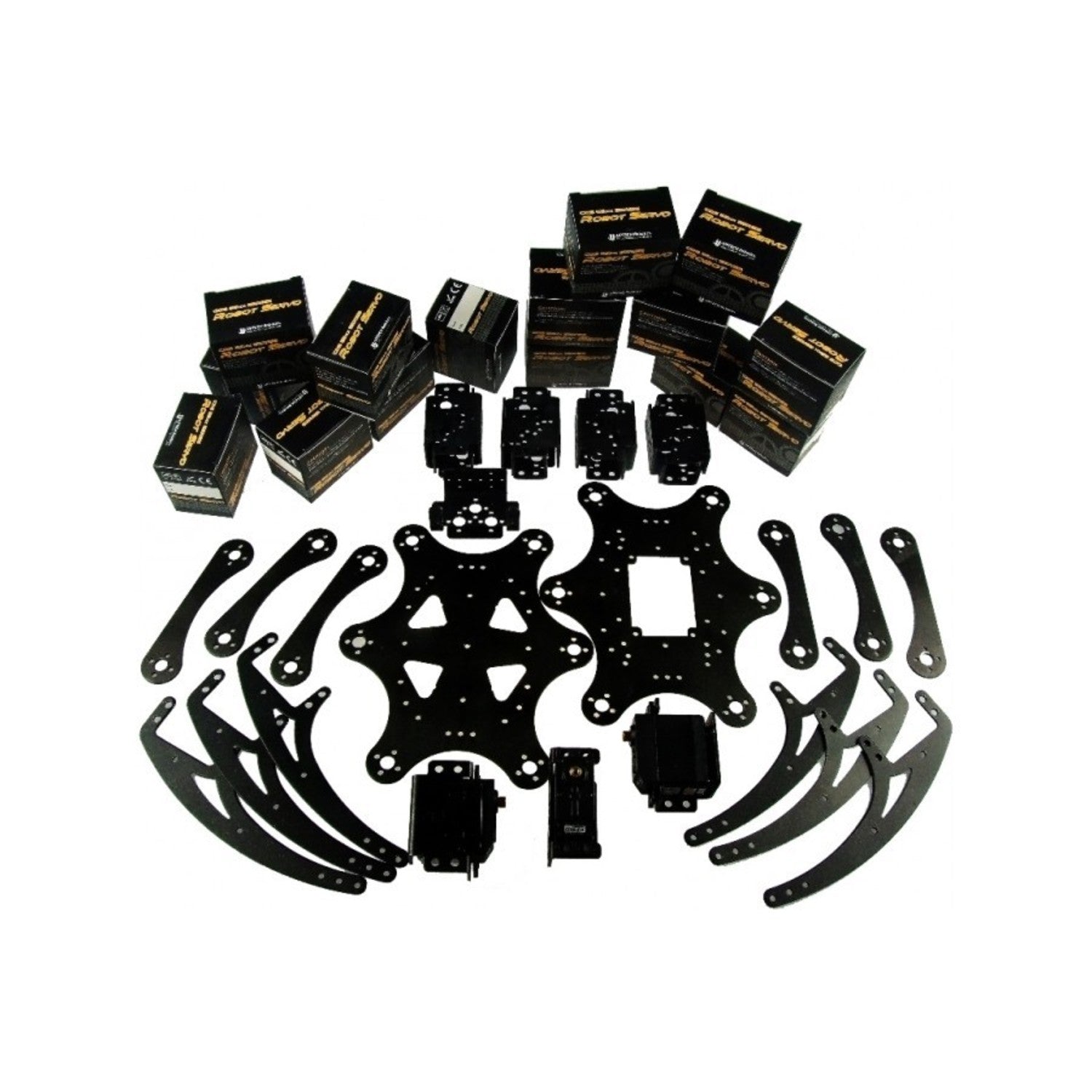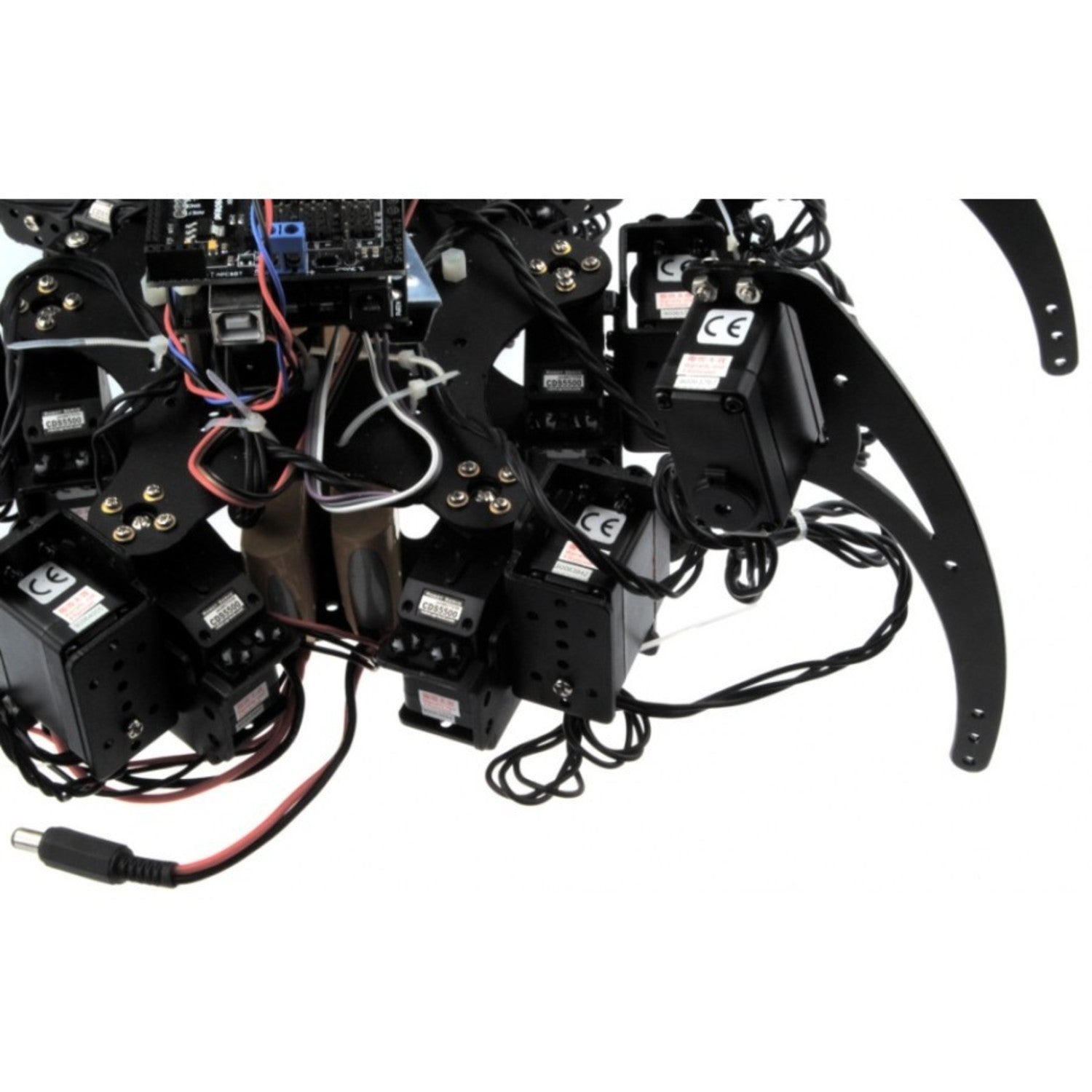This hexapod robot kit is designed for traveling on uneven terrain. It comes equipped with eighteen high - performance CDS5516 servos that can rotate 300 degrees, providing the hexapod with 18 degrees of freedom. These servos have a max holding torque of over 14kg/cm, enabling the hexapod to stand on just two feet. The CDS5516 servos can send back their current angle, torque, and working temperature when queried via a serial interface. This feature enhances the accuracy and control of each servo and helps you troubleshoot your projects. The included Arduino Mega 1280 and Mega IO Expansion Shield make this hexapod a powerful yet DIY - friendly robotics platform. With 54 I/O pins and multiple serial communication ports on the Mega, you can easily add various sensors and modules for your robotic needs. The whole robot can be powered by a single 7.4v battery for the Arduino mega board and both servo driver boards. Optional parts like the Xbee wireless communication module, joystick remote controller, ultrasonic range sensor, and IR range sensor are available. Also, you'll get useful documents such as a wiki, instruction manual, servo data sheet, wiring diagram, sample code, and a zip file. The shipping list includes the hexapod robot frame kit, different types of screws and nuts, footstep bearings, the Arduino Mega 2560 microcontroller board, Mega IO Expansion Shield, servos, servo driver boards, a 7.4v battery, and jumper wires. There's also a project example of a hexapod robot with a CMUCam3 vision sensor.



Using the hexapod robot kit is easy. First, assemble the robot frame using the provided screws and nuts as shown in the instruction manual. Then, connect the servos to the servo driver boards and the Arduino Mega board. Power on the robot with the 7.4v battery. You can start programming the Arduino to control the movement of the hexapod. If you want remote control, install the Xbee wireless communication module and use the joystick remote controller. When using sensors, connect them to the appropriate I/O pins on the Mega board. Here are some important notes. Make sure the battery is fully charged before use. Avoid over - stressing the servos as it may damage them. When programming, be careful with the commands sent to the servos to prevent abnormal movement. For maintenance, regularly check the screws and nuts to ensure they are tight. Clean the robot frame to prevent dust accumulation. If you encounter any issues with the servos, refer to the servo data sheet or the troubleshooting section in the instruction manual.